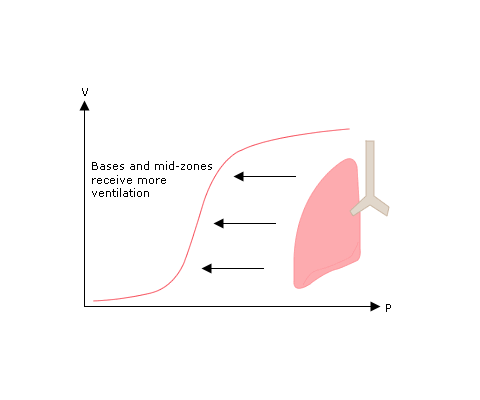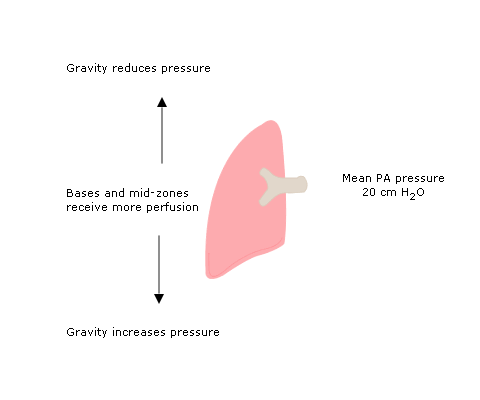Ventilation
In a normal patient breathing spontaneously, the resting position of the lung is such that the apices are already reasonably expanded, whilst the bases are more squashed (though not collapsed). The resulting positions on the compliance diagram mean that the bases and mid-zones are on the steep part of the curve and receive more ventilation.
The effect of gravity reduces the perfusion pressure by 1 cm H2O for every cm in height above the level of the heart, with a similar increase below. This means that perfusion at the apices reduces to virtually zero, and increases progressively down to the bases.
Ventilation/perfusion (V/Q) matching
Under normal circumstances, therefore, both ventilation and perfusion are greater toward the bases of the lungs and are well matched.

In a normal patient breathing spontaneously, the resting position of the lung is such that the apices are already reasonably expanded, whilst the bases are more squashed (though not collapsed). The resulting positions on the compliance diagram mean that the bases and mid-zones are on the steep part of the curve and receive more ventilation.
Perfusion
The effect of gravity reduces the perfusion pressure by 1 cm H2O for every cm in height above the level of the heart, with a similar increase below. This means that perfusion at the apices reduces to virtually zero, and increases progressively down to the bases.
Ventilation/perfusion (V/Q) matching
Under normal circumstances, therefore, both ventilation and perfusion are greater toward the bases of the lungs and are well matched.
